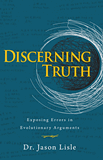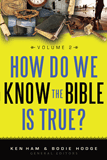
Chronology Conundrums
Is Joseph the son of Jacob or Heli?
Some have claimed that the Bible contradicts itself by claiming that Joseph is both the son of Jacob (Matthew 1:16) and the son of Heli (Luke 3:23). However, like all other alleged biblical contradictions, this one is also without merit.
Matthew primarily wrote his account of the life of Christ for a Jewish audience to show that Jesus was their long-awaited promised Messiah. Thus, Matthew traces the genealogy from Abraham to Jesus, demonstrating that Jesus was the seed of Abraham and David. Instead of giving the complete list of names, Matthew deliberately used three groups of fourteen generations (Matthew 1:17; the missing names are found in 1 Chronicles 3:11–12, 2 Kings 23:24, 24:6), as an apparent memory aid to his readers, or perhaps because the Hebrew letters in the name David add up to fourteen.
Matthew also shows that, as the adopted son of Joseph (Matthew 1:16), Jesus was a descendant of David through Solomon, and thus had the legal right to sit on David’s throne. According to Jewish tradition, he who raises a child is regarded as though the child had been born to him. So the legal right that Joseph had to David’s throne was transferred to his adopted son, Jesus.
In contrast, Luke’s gospel seems to have been written for a Gentile audience. His emphasis is on the perfect humanity of Jesus. Thus, Luke shows that Jesus is the “son of man” and the promised “seed of the woman” (Genesis 3:15) by tracing His genealogy back to Adam.
The list of names that Luke presents from David to Jesus is different from Matthew’s because Luke follows the line of another son of David—Nathan. Most commentators understand that Luke’s genealogy presents the ancestry of Mary. John Gill, a great Bible scholar, stated in his commentary that “Joseph, the son of Heli” meant:
not that Joseph was the son of Eli; for he was the son of Jacob, according to (Matthew 1:16), but Jesus was the son of Eli; and which must be understood, and carried through the whole genealogy, as thus; Jesus the son of Matthat, Jesus the son of Levi, Jesus the son of Melchi … till you come to Jesus the son of Adam, and Jesus the Son of God; though it is true indeed that Joseph was the son of Eli, having married his daughter; Mary was the daughter of Eli: and so the Jews speak of one Mary, the daughter of Eli, … which accords with this genealogy of the evangelist, who traces it from Mary, under her husband Joseph; though she is not mentioned, because of a rule with the Jews, that “the family of the mother is not called a family.”1
Renowned Greek scholar A.T. Robertson points out that Luke employs the definite article tou before each name, except Joseph’s.2 This seems to indicate that a better translation would be “Jesus being (as was supposed the son of Joseph) the son of Heli” with the understanding that Jesus was the grandson of Heli through Mary.
Although the descendants of Jeconiah were unable to physically sit on the throne of David (Jeremiah 22:24–30), Jesus was able to fulfill the prophecies that David’s throne would be established forever (Jeremiah 33:17) through his mother Mary (genetic descendant of David through Nathan—a non-cursed line).
Who was Arphaxad’s son: Cainan or Shelah?
If you compare the chart in the magazine to Scripture, you’ll notice that we have omitted a name given in most of today’s translations of Luke 3:36: Cainan. Further, you’ll notice that this name does not appear in the corresponding genealogies given in Genesis (10:24, 11:12) and 1 Chronicles (1:18, 24). Why?
We must be clear that this contradiction is not an error in the original autographs of Scripture.
First, we must be clear that this contradiction is not an error in the original autographs of Scripture, which were God-breathed (2 Timothy 3:15–17), and therefore were inerrant. Instead, this insertion is found in later Septuagint (LXX) manuscripts, which were non-inspired copies of the Hebrew manuscripts.
There are two possible explanations for the addition of Cainan in Luke 3:36. The first is that Cainan was part of the original manuscripts, and Hebrew copyists omitted this name while copying the Genesis and 1 Chronicles passages. However, as Henry Morris has pointed out,3 this is the less likely of the explanations as Hebrew scribes were known for their meticulous copying procedures. Additionally, the name is absent from other ancient versions of the Old Testament (Samaratian, the Vulgate, the oldest versions of the Septuagint, etc.).
The second explanation is more likely: Septuagint scribes copying Luke’s letter inadvertently inserted an extra Cainan between Arphaxad and Shelah. Later Septuagint copyists then inserted Cainan between Arphaxad and Shelah in the Genesis and 1 Chronicles passages, to conform them to the list given in Luke.
Larry Pierce has shown that this explanation is supported by information from the Jewish historian Flavius Josephus (AD 37/38 – ca. 100). He demonstrated that Josephus, apparently using the Septuagint to compile the genealogy of Christ, did not include the extra Cainan.
If Josephus did not use the LXX, he must have used some document based on the LXX for it repeats too many of the mistakes of the LXX to be a chance occurrence. It appears that at the time of Josephus, the extra generation of Cainan was not in the LXX text or the document that Josephus used, otherwise Josephus would have included it! If the LXX contained the reading, Josephus either omitted it by mistake (which is not likely) or held the reading in low esteem. We know that when Jerome (ca. AD 347 – 419/420) translated the Vulgate (Latin translation of the Bible) in the 5th century AD, he did not use the LXX in spite of Augustine’s (AD 354–430) pleadings because Jerome said it was too inaccurate. He used the Hebrew text which did not include the variation.4
Pierce points out that additional information comes from Julius Africanus (AD ca. 180 – ca. 250). Africanus also omitted the Cainan from his chronology (written in AD 220), even though he clearly used the inflated Septuagint ages. The addition of the extra Cainan must have come some time after AD 220. Pierce adds:
. . . while Josephus was not a Christian writer and would not have been influenced by copies of Luke genealogies, Julius Africanus was a devout Christian. In his Epistle to Aristides ch. 3, he made an extensive study of the genealogies of both Luke and Matthew. In fact he quotes Luke 3:23.5 Hence, Africanus had copies of both the Gospel of Luke and Matthew. So one cannot claim that Africanus did not know about Luke’s gospel or his genealogies. If the copies of Luke’s writings had this spurious Cainan, no doubt Africanus would have amended his chronology to include it. In fact, the earliest known extant copy of Luke, the 102-page (originally 144) papyrus codex of the Bodmer Collection labeled P75 (dated between AD 175 and 2256), omits the extra Cainan. Thus the reading in Luke 3:36 cannot be shown to exist before AD 220.
Additionally, the reformed Baptist theologian John Gill stated the following about the addition of Cainan in Luke 3:36:
This Cainan is not mentioned by Moses in Genesis 11:12 nor has he ever appeared in any Hebrew copy of the Old Testament, nor in the Samaritan version, nor in the Targum; nor is he mentioned by Josephus, nor in 1 Chronicles 1:24 where the genealogy is repeated; nor is it in Beza's most ancient Greek copy of Luke: it indeed stands in the present copies of the Septuagint, but was not originally there; and therefore could not be taken by Luke from thence, but seems to be owing to some early negligent transcriber of Luke's Gospel, and since put into the Septuagint to give it authority: I say “early”, because it is in many Greek copies, and in the Vulgate Latin, and all the Oriental versions, even in the Syriac, the oldest of them; but ought not to stand neither in the text, nor in any version: for certain it is, there never was such a Cainan, the son of Arphaxad, for Salah was his son ….7
How old was Jesus when He died?
Many claim that Jesus was 33 years old when He died and rose again. However, further study reveals that it is more likely that He was around 37 years old.
Jesus was born during the time that Augustus ordered the Roman world to be taxed, when Cyrenius was governor of Syria (Luke 2:1–7). This was before Herod the Great died (Matthew 2:19), which we know from history happened in 4 BC. So Jesus was born in the year (or two) before this, ca. 5 BC.
John began preparing the way for the Lord in the fifteenth year of the reign of Tiberius Caesar (AD 26). This was the year of the thirtieth Jubilee, when Jesus turned 30. John had been baptizing for awhile before Jesus came to him, which He did in AD 27 (Matthew 3, Luke 3).
John entered his fourth year of ministry in AD 29. It was at this time that the Lord entered into His public ministry with his first miracle, which He performed in Cana of Galilee after calling His disciples. According to James Ussher, four years of preparation for the work that Jesus would do is not unreasonable.
It should not be surprising that we assigned so long a period of time to it, when one considers that for so great a work a shorter time would have been too short, especially without the help of miracles to accomplish all that the angel Gabriel confirmed to his father Zacharias, that John would do. …
The following words of Paul argue that not a short period of time, but a full course of preaching, was to be finished by John before the coming of the Lord:
“When John had first preached before his coming the baptism of repentance to all the people of Israel. And as John fulfilled his course, he said, Whom think ye that I am? I am not he. But behold there cometh one after me, whose shoes of his feet I am not worthy to loose.” (Acts 13:24–25)8
From this time, four distinct Passovers mark the time of Jesus’ public ministry. During the first Passover, Jesus cleared the temple. This happened 46 years after Herod started building the temple (John 2:12–22) in 17 BC. Jesus celebrated His fourth and final Passover in AD 33. The Messiah was around 37 human years of age when He, the eternal Creator of the universe, laid down His life for His sheep only to take it up again three days later, conquering the curse of death for those who believe.
Phlegon of Tralles, who wrote a history starting from the first Olympiad down to AD 140, confirmed the AD 33 date of Jesus’ death on the cross. He stated that in the 19th year of Tiberius and the fourth year of the 202nd Olympiad (i.e., AD 33), a large eclipse occurred which turned day to night around the sixth hour (noon), and an earthquake destroyed many houses in the city of Nicaea.9 Of course, they only thought an eclipse had occurred. In fact, the “eclipse” lasted too long to be an eclipse of the sun, and the Passover occurred near the full moon, when solar eclipses cannot occur. It was a miraculous event.
For more information on these and other questions concerning the Adam–Christ timeline, see The Annals of the World by James Ussher, edited by Larry Pierce.
Footnotes
- Commentary available online.
- Commentary available online.
- Morris, H.M., The Genesis Record, Baker Book House, Grand Rapids, MI, 1976, p. 282.
- Pierce, L., Cainan in Luke 3:36: insight from Josephus, CEN Technical Journal 13(2):76, 1999.
- Ante-Nicene Fathers 6:126, Hendrickson, Peabody, MA, 1994.
- Geisler, N.L. and Nix, Wm. E., A General Introduction to the Bible, Moody Press, Chicago, revised and expanded, pp. 390–391, 1986.
- Commentary available online.
- Ussher, James. Annals of the World, Master Books, 2003, p. 804.
- Ussher, James. Annals of the World, Master Books, 2003, p. 822.
Recommended Resources

Answers in Genesis is an apologetics ministry, dedicated to helping Christians defend their faith and proclaim the good news of Jesus Christ.
- Customer Service 800.778.3390
- © 2024 Answers in Genesis






